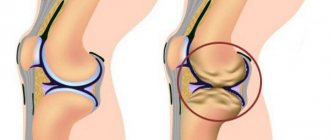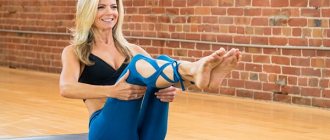How to run fast, become more resilient and productive on the treadmill - if you are looking for instructions, welcome to our page. Today we aim to have a long and detailed conversation on this topic. You should pay attention - improving personal performance in running depends not only on the perfection of technique. A huge role is played by your well-being during training, as well as shoes, clothing, nutrition, pre-warm-up, music in the player, etc.
Do you want to know how to learn to run fast and not get tired, how to easily cover long distances and not feel exhausted and exhausted to the limit? Playing sports should make you happy and bring pleasure, otherwise you won’t last long, and the benefits from training are unlikely to come. Let's study the recommendations of experts, find out how to learn how to run 100 meters very quickly, as well as over longer distances.
Is running a dangerous sport?
You may be surprised to learn that running is the most injurious form of exercise. Some studies even estimate the number of runners injured per year at a staggering 74%. And this is mind-blowing because we think everyone knows how to run. Right?
Wrong! A huge number of people quit running due to pain and injuries. Running has earned a negative reputation among ordinary citizens. This is mainly due to lack of information about proper running technique and rules.
Tips for Beginner Runners
Buy quality sneakers
The difference between good and bad shoe quality is the difference between successful running and injury. You don't want such a setback to ruin your plans to get in shape by running.
So, visit a sports store. And get yourself the right pair of good running shoes.
Change your sneakers every 500–600 km
This is very important because the soles of your sneakers are subject to a lot of wear and tear. And if you continue to run in these shoes, you may get damage to your feet due to the increased impact force. This can lead to serious injury and put an end to your running plans.
Warm up before running
How to learn to run fast? Warm-up is a basic classic tip! But most often it is ignored. It is very important to warm up your body before training. This increases temperature and blood flow to the muscles. Always start your run with a light jog for 5-10 minutes.
You can also do some jumping and stretching exercises to prepare for running. However, do not do excessive stretching exercises as this will lead to poor running performance and sometimes even injury.
Sneakers and warm-up before running.
Problems to be faced
If you increase your mileage haphazardly, you may encounter a huge number of problems that only move you further away from your goal.
Table
| Error | Consequence |
| Increasing mileage too quickly | The cardiac and musculoskeletal systems do not have time to adapt to the load, overtraining occurs, and the risk of injury increases |
| Each subsequent workout is longer (or longer) than the previous one | Insufficient recovery of the body leads to overtraining and a drop in athletic performance |
| In one workout, a person tries to increase several indicators at once: speed, endurance, explosive strength | The body quickly moves into the anaerobic zone; there is little benefit from such training |
| When it is not possible to achieve inflated goals, the athlete tries to repeat the attempt over and over again without reducing the intensity | This not only leads to overtraining, but also completely kills motivation. |
We'll show you how to safely increase your mileage, maintain your enthusiasm, and be proud of your results!
Download training plans to prepare for the marathon and half marathon.
Start preparing right now!
Basic tips for correct body position when running.
Upright body and relaxed shoulders
Imagine a rope on the top of your head, pulling your head up as you run. Too many people slouch or bend their necks when running. It is not right!
Keep your body in a straight line with relaxed shoulders. Also, pay attention to the grip of your hands. And avoid making it too hard.
Fast Running Tip: Place your thumb inside your fist to relax your forearms and shoulders as you run.
Lean your body forward slightly while keeping your back straight
This is quite difficult for new runners. Watch professional runners. There is a slight forward tilt in their body when moving. This helps you use gravity to move forward naturally without putting too much force on your legs.
Short and quick steps
The number of steps per unit distance is often called "cadence". Cadence is the number of steps a runner takes per minute. A common mistake new runners make is taking long strides while running. This not only causes the foot to hit the heel (cause of injury), but also increases the impact on the ground.
Short and quick steps ensure that the foot hits the ground with the middle of the foot. This reduces the likelihood of injury.
Avoid hitting your heel on the ground
Hitting your heels is the most common cause of running injuries. This puts a lot of stress on your ankles and joints. And can lead to serious injuries in the future. Aim to strike the ground with the front or middle of your foot. If you follow the advice above, it will happen naturally.
Breathe correctly
How to learn to run fast? Proper breathing is one of the most important running tips you can implement. Many runners often breathe irregularly while running. And long-distance runners often breathe too quickly.
The main thing is to maintain a normal breathing rate throughout the race. Always match your steps to your breathing rate, not the other way around.
Top 5 sets of exercises for acceleration
Exercises to improve speed performance should be carried out before each run, at least 3 times a week.
And very soon they will give their results - you will run much faster. But keep in mind that they need to be done correctly - this is the only way the necessary muscle groups will be worked out and the ligaments and bones will not be damaged. And running shoes can help you with productive exercise. So, TOP 5 sets of exercises recommended by sports trainers:
1.Running in place.Pumps up the iliopsoas, quadriceps, calf muscles, anterior and posterior thighs, and abs. Determine the number of repetitions yourself - rely on your own training:
- With knees raised. As you perform, keep your heels off the floor and use only your toes. Raise your knees as high as possible while running. Be sure to alternate between speeding up and slowing down. The back should be as straight as possible, the stomach should be pulled in. A variation of this task: while running, rest your hands on a barrier, such as a wall.
- Heels to buttocks. When running, reach your heels towards your buttocks, ideally touching them. Keep your posture straight and your abdominal muscles tense. Move your arms as you would during a normal jog. This will help you place your foot correctly.
- Jumping. Push off strongly and jump from foot to foot. At this time, the hands move voluntarily. This method improves repulsion.
- Lying down. Place your feet perpendicular to the floor, then begin running movements. Slow down and speed up as you perform.
- With a jump. Two options: 1st – each touch of the floor is accompanied by an active push up with a swing of the bent leg and a jump. 2nd – rise to a height from different legs alternately.
- With emphasis. Place your hands on the wall and “run” vigorously. It is important that the supporting leg is at the same level as the body.
- Jumping. Jumping strengthens the calf, lumbar, thigh muscles, and buttocks. They need to be performed in 3-4 approaches. Determine the quantity based on your strength and physical fitness:
- With a change in the position of the legs. The starting position is one leg in front. Jump quickly and change the position of your legs. The exercise should be performed on your toes, with a straight posture. In this case, the knee joints tend upward, but move forward. This type improves the alternation of legs, the technique of bringing / spreading the hips.
- On straight legs. Starting position – legs slightly apart. Jump, pushing off strongly. Keep your legs and back straight and your stomach tucked.
- From a half squat. Half crouch, jump as high as possible. Land in the same position from which you jumped. Variation of the task: jumping on one leg from a half-squat, the other leg is tucked.
- On the jump rope. Start by jumping on both legs. There is no need to jump too high. Gradually increase the pace. If possible, complicate the task: while jumping over the rope, change legs. This way you will follow the pace set by the jump rope itself. The exercise works great for endurance and helps develop the correct running rhythm.
- To higher ground. You can sit on a bench or step. Starting position: lean your half-bent leg on a raised platform, your leg should be straight on the floor. Straightening your bent knee, jump up and, while lowering, change the position of your legs.
- Down up. Jump down from a height of 80-100 cm and, having pushed off, immediately jump to the same height located nearby. And in the opposite direction.
Squats.
They help strengthen all muscle groups in the legs, buttocks, and develop good coordination and balance. From a standing position, slowly squat until you feel tension in all your muscles. The knees should be strictly above the feet; do not push them forward too much. Repeat as many times as you consider necessary until you are moderately tired. Another effective exercise: lean forward while holding an additional weight with your hands. As you bend over, lift and step one leg back. Squat down on the support. Lower the load as below your knee as possible, lift it, stand up. Repeats for each leg – 10-12.
3. Rise and rolls.
They work to strengthen the calf, tibial muscles, and ankle joints. Must be performed before running, not necessarily sprinting, on an ongoing basis. Starting position of the classic “spring”: feet shoulder-width apart, hands on the belt. As you exhale, lift up onto your toes, creating tension in your calves; as you inhale, return to the “start.” Variation of the “spring”: one leg is on the floor, the second is on a raised platform. The lifts are the same as in the classic exercise. Rolling from toe to heel and back can be done without support or with support on the back of a chair. Exercises for the torso. Pumps up the muscles and tendons of the torso, which are activated when running. The most effective plank and pelvic bridge on one leg. The plank is performed like this: lie on your stomach on a hard, flat surface, lift yourself up on your elbows at a 90° angle and your toes. Keep your body straight, parallel to the floor, without leaning to the side. The longer the better. Performing a bridge: lie on your side on a solid base, resting your elbow and leg, which are below, lift your other leg as high as possible, hold for 10-15 seconds and lower. Repeat the same on the other side. All exercises can be performed at home. No special equipment is needed for this: only the desire and time of the athlete, as well as accuracy of execution. The effectiveness of muscle pumping and the result of efforts directly depend on it.
Nutrition Tips for Running
Have time after meals
It takes time to digest food. If you go for a run immediately after eating, the food will not provide any energy. And you may even vomit. Try to keep a gap of 1-2 hours between eating and running.
Fuel your body before running
Running requires energy, and it is provided. Did you eat more than 90 minutes before your run? Switch to complex carbohydrates! They are slowly released and provide energy while running.
However, if you have less time before your run and need to eat something, grab a banana or dried nuts. They will give you an instant burst of energy for running.
Don't Skip Post-Run Nutrition
After a run, it is important to refuel your body for 30-45 minutes. Since this is the ideal time for all nutrients to be absorbed by the body. Aim for a 4:1 carbohydrate to protein ratio.
Be sure to eat protein. It helps build muscles and tissues damaged during exercise.
Motivation
Set yourself a goal.
It's easier to achieve something when there is a goal. Running for the sake of running is not interesting, but doing it to achieve a certain result is another matter. If you want to lose weight, run, for example, 50 kilometers or from point A to point B. Imagine how you will feel if you achieve your goal, how proud your family and friends will be of you.
Find a company.
It's easier to work out with someone. Firstly, you will motivate each other, and secondly, if one really wants to skip classes, your running partner will not allow you to do this, and vice versa.
Like-minded people will energize you
Music.
Running to your favorite music, to the rhythm of songs - what could be better? Choose energetic tracks with a similar rhythm, and no one will be able to knock you off the pace.
Rest and Recovery for Better Running
The Healing Power of Rest
Running perfectly removes excess calories from the body. That's why it's one of the most effective exercises to lose weight. And also get fit if you do it right. However, it is important to give your body proper rest and breaks between long-distance marathons.
On rest days, you can do workouts such as yoga, swimming or upper body exercises to build strength.
Beware of overexertion
This naturally follows from the advice given above. Any exercise damages the muscles of the body. And in order to become stronger and healthier, the body needs time to recover.
What happens if you continue to train without allowing time for recovery? You risk overtraining, putting yourself at risk of serious injury.
Always stretch your legs after a run
Don't suddenly stop running or get out of your shoes. Gradually finish your run with a slow jog for 5 to 10 minutes to cool down your body. After this, stretch the leg muscles for 5-7 minutes so that they do not become stiff and sore.
Quick Tip: After running and stretching, lift your legs up to the wall while lying on your back. This allows the blood to move away from your legs and be filled with fresh blood when you stand up again. You will experience great relief from this technique, called "leg drainage", without any pain.
Aim for a good night's sleep
A proper night's sleep of 7-8 hours is essential for recovery. This will ensure that you are fresh for your morning run. Sleep is our body's natural way to heal. Use it.
How to increase the duration of your run?
The teenager needs to check what physical shape he is in
Before you start improving your running skills, a teenager needs to test himself. He must test his own physical form. Find out whether he has the ability to fulfill certain standards. And will he be able to run longer?
In addition, the teenager needs to master running technique. Breathe and move your arms correctly. If mistakes in this regard are made when jogging over short distances, then over long distances this can become a rather serious problem. Therefore, it is imperative to work on your running technique. And only after that increase its duration.
Bonus but very useful running tips
Set goals and create a plan
People who don't plan plan to fail! This is true for running too. If you're new to running, set a reasonable weekly and monthly training goal. Set a time frame and monitor daily progress towards this goal.
Never give up
People who have never run before often find running too hard. Many people often quit because they feel too tired and exhausted for the rest of the day after running. Be patient as your body slowly adjusts to the physical demands of running.
You'll soon discover that you can not only run faster and longer distances, but also feel fresh and alive after running. Never give up!
Liven up your running.
Your body will quickly adapt if you continue doing similar exercises. Moreover, after a while, you may also feel bored doing the same exercises or running the same routes.
So add a little spice. Change your running pace, run on a different track. Incorporate a few push-ups between runs, and do side runs. The possibilities are endless!
Use interval training
This advice should only be followed by those who are used to running short distances. Sprint for 20 seconds and then jog lightly for 10 seconds. Repeat this sequence 3-5 times according to how you feel.
You can further vary the duration and spacing between intervals. Interval training improves your cardiovascular efficiency. And, ultimately, they help you learn to run faster and better.
Running may seem like a natural thing to do. But like any other exercise, running also needs proper form and technique. This is necessary to obtain maximum benefit and prevent injury.
The above tips will help you learn to run fast. And, of course, they will help improve your physical fitness by leaps and bounds!











